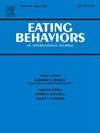导航身体形象的灵活性:身体形象的psyf - flex量表及其在区分饮食失调和身体畸形症状的严重程度方面的效用
IF 2.4
3区 医学
Q2 PSYCHIATRY
引用次数: 0
摘要
身体形象灵活性指的是容忍不良身体相关体验的意愿,同时继续致力于有价值的目标和行动,在身体和饮食相关疾病的发展和维持中起着重要作用。然而,目前评估措施的已知局限性是对这一结构进行充分研究的主要障碍。近年来,一种新型的心理弹性测量方法(psyf - flex)被成功开发出来。本研究旨在适应和验证心理- flex身体形象(Psy-Flex- bi),并探讨其心理测量特性。此外,我们旨在通过测试该量表在普通人群中区分这些症状严重程度的能力,支持该量表作为饮食失调和身体畸形领域的重要工具。这项研究包括1031名参与者,他们完成了在线问卷调查。psyp - flex - bi(6个条目)被成功改编,并确定了量表的一维析因结构。该量表显示出强大的心理测量特性,包括Cronbach's alpha为0.89,并且在性别上是不变的。期望方向和强度与相似构念和适应不良心理指标也存在相关。最后,Psy-flex-BI评分成功对应了独特的饮食失调和身体畸形症状严重程度,呈现出文献支持的两种不同模式。这一数据支持了该量表的筛查潜力。事实上,Psy-Flex-BI是一个简单而合理的身体形象灵活性测量,包括六个核心ACT维度,可以区分一般人群饮食和身体畸形症状的严重程度。本文章由计算机程序翻译,如有差异,请以英文原文为准。
Navigating body image flexibility: Psy-Flex scale for body image and its utility in differentiating severity levels of disordered eating and body dysmorphia symptomatology
Body image flexibility concerns the willingness to tolerate undesirable body-related experiences, while remaining committed to valued goals and actions, and plays an important role in the development and maintenance of the body and eating-related disorders. However, the known limitations of current assessment measures represent a major barrier to the adequate study of this construct. Recently, a novel brief psychological flexibility measure was successfully developed (Psy-Flex). The present study aimed to adapt and validate the Psy-Flex for Body Image (Psy-Flex-BI) and to explore its psychometric properties. Additionally, we aimed to support this scale as an important tool in the fields of disordered eating and body dysmorphia, by testing its ability to differentiate the severity levels of these symptoms in the general population. The study comprised 1031 participants who completed online questionnaires. The Psy-Flex-BI (6 items) was successfully adapted, and the one-dimensional factorial structure of the scale was confirmed. The scale presented robust psychometric properties, including a Cronbach's alpha of 0.89, and was invariant across sex. It also correlated in expected directions and strengths with similar constructs and maladaptive psychological indicators. Finally, Psy-flex-BI scores successfully corresponded to distinctive disordered eating and body dysmorphia symptomatology severity levels, presenting two distinct patterns supported by the literature. This data supports the scale's screening potential. Indeed, the Psy-Flex-BI is a brief and sound measure of body image flexibility, encompassing the six core ACT dimensions, and can differentiate the severity of eating and body dysmorphia symptoms in the general population.
求助全文
通过发布文献求助,成功后即可免费获取论文全文。
去求助
来源期刊

Eating behaviors
Multiple-
CiteScore
4.20
自引率
3.60%
发文量
65
审稿时长
60 days
期刊介绍:
Eating Behaviors is an international peer-reviewed scientific journal publishing human research on the etiology, prevention, and treatment of obesity, binge eating, and eating disorders in adults and children. Studies related to the promotion of healthy eating patterns to treat or prevent medical conditions (e.g., hypertension, diabetes mellitus, cancer) are also acceptable. Two types of manuscripts are encouraged: (1) Descriptive studies establishing functional relationships between eating behaviors and social, cognitive, environmental, attitudinal, emotional or biochemical factors; (2) Clinical outcome research evaluating the efficacy of prevention or treatment protocols.
 求助内容:
求助内容: 应助结果提醒方式:
应助结果提醒方式:


